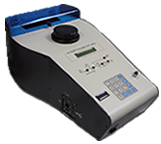Gas Pycnometry

Gas pycnometry is one of the most reliable techniques for obtaining true, absolute, skeletal, and apparent volume and density measurements of both solids and liquids.
Gas pycnometry is a non-destructive method for density analysis that works by measuring the amount of helium displaced by a sample to measure the volume.
The weighed sample is placed in its chamber and once sealed, filled with helium which penetrates small voids and open pores. The pressure in the sample chamber is compared to a reference and the skeletal density is calculated and reported. Density is a key indicator of the skeletal structure of a material and therefore a highly important variable that often needs monitoring as it affects the function and performance of many different products.
Lawson Scientific Ltd has experience working with a variety of sectors to measure samples ranging from pharmaceuticals to ceramics to mining ores.
Lawson Scientific Ltd has the capability to measure the skeletal density of powders, solids, slurries and non-volatile liquids in volumes ranging from 1cm3 to 100cm3.
Bulk Density
Bulk density, also known as tapped density, is a non-destructive method for analysing the volume of a sample at its maximum packed volume.
We are able to quantify flowability by reporting the Hausner ratio and Carr’s index. A Hausner ratio of <1.25 indicates a powder that is free flowing whereas >1.25 indicates poor flowability. Similarly, the smaller the Carr’s Index the better the flow properties.
Bulk density is measured by pouring the sample into a graduated cylinder and tapping it a set number of times using a jolting volumeter. Using the mass of the sample, tapped and untapped volume, we can calculate:
• Pour (or bulk) density
• Tapped density
• Hausner ratio
• Carr’s index
 +44 (0)1582 704807
+44 (0)1582 704807 enquiries@lawsonscientific.co.uk
enquiries@lawsonscientific.co.uk


